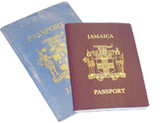Medical Instrumentation
The Cardiac Pacemaker
By Lloyd L. Hyde
The following is written from a clinical engineering point of view and does not intend to convey medical advice. It serves only as basic information to the reader.
A healthy human heart beats over 100,000 times per day, pumping approximately 1,800 ? 23,000 gallons of blood through the body?s circulatory system. At a rate of approximately 72 beats per minute (BPM) this would be equivalent to roughly 38 millions beats in one year. If we further calculate the annual amount of blood that the heart handles as a pump, it would amount to 700,000 gallons per year. It is a highly specialized pump with four very efficient chambers, two upper chambers known as Atria and two lower chambers known as the Ventricles. The ventricles are responsible for the pumping activity, while the upper and less powerful chambers are pretty much responsible for the filling phase. The heart is equipped with its own pacemaker commonly known as the Sino-Atrial Node (S-A Node). This node is located in the right atrium and is responsible for the generation of a tiny, but consistent electrical impulse. These impulses are transmitted via the muscle walls of the right atrium to the Atrio-Ventricular Node (A-V Node) and then to the ventricles through the bundle of His. It is this electrical activity that enables the heart to initiate its pumping action.
Often in many people the electrical activity just described does not flow freely, therefore the electrical conduction of the heart is impaired, often in a permanent mode, other times temporarily. Thus, the heart?s natural pacemaker malfunctions and very little or no electrical signal progresses to the lower portion of the heart. This loss of signal gives rise to a condition that your doctor will diagnose as a Heart Block. When these electrical impulses from the right atrium are blocked, the ventricle is equipped to generate its own. Frequently however, these impulses are slower and are not in synchronism with the natural pacemaker. This interruption in the signal, in a majority of cases, results in slower heart rates, considerable reduction in blood flow and circulation, with a significant decrease in oxygen to various parts of the body. As your doctor will tell you, a minor change in your heart as mentioned above, oftentimes results in gross change externally. This change can mean significant loss in the ability to perform very simple tasks. While there is no natural healing or self-reparation for the malady just described, your cardiologist will tell you that modern medicine has devised a way to help you.
Help comes in the form of a device called the Cardiac Pacemaker, the subject of this article. If I were writing this article for a group of scientists, I would start by showing some very elaborate looking graphs, and with them would likely present some very complex mathematical formulae and the theory of alternating and direct current. While the nature of my work involves employing much of the above routinely, I have decided to exclude them from this article. The same will be true of the many other articles on medical instruments and devices that I will present to you in the future via this article series.
The pacemaker terminology is very extensive. In this article I will forego much of that terminology, and focus instead on the useful aspects of the device. Some of the names that are commonly associated with the pacemaker are Pulse Generator, Generator, Implantable Device, Heart Pacer, and so on.
Dr. Albert Hyman is credited with using the first pacemaker in the early 1930s. His was an external (temporary) unit weighing about 15 pounds which was used to control the patient?s heartbeat. Hyman?s work with this device was enhanced in 1950 by three physicians from Boston, Massachusetts and Toronto, Canada. The early pacemaker saw additional change in the mid-50s with the help of Dr. C.W. Lillehei, then of the University of Minnesota. Lillehei had several pacemakers that were powered via the wall outlets, when one day a fierce thunderstorm disabled much of his outlets. The good doctor approached an engineer to see if there was any possibility of his designing a pacemaker that was battery driven. The able engineer persisted and developed a device that was small and battery operated. Importantly, this device provided a unique feature. It could be attached to the patient?s clothing as he or she moved about. Remember, this unit was now free of any external electrical connection, compact, and had all the necessary requirements for pacing the heart externally. C. Walton Lillehei was excited, liked what he saw, tried it out in his laboratory, established that it worked well, and a new era in cardiac pacing was launched.
A Swedish Surgeon, Dr. Ake Senning, in 1958 became the first physician to implant the first implantable battery-operated cardiac pacemaker. After this implant by Dr. Senning, a group of American physicians and scientists built, tested and implanted a cardiac pacemaker in a 77-year-old man in 1959. This advance was quickly published and so this particular device came into prominent use worldwide.
When the tiny electrical (Milliamps) impulses from the upper chamber of the heart are blocked, your doctor will advise you that you are a prime candidate for an implanted cardiac pacemaker. The implant will function in almost the same way as your natural pacemaker. It basically operates in a preset or demand mode and its electrical action will cause the muscle of the heart to contract.
The pacemakers used by the earlier clinicians were classified to some extent under the temporary category. However, they played a very significant role in the prolonging of life for many people. While companies come and go, there are still somewhere in the order of 20 to 25 pacemaker companies worldwide. These companies produce a wide array of pacemakers. In the early ?80s pacemaker were being implanted at the rate of 130,000 per year in the United States alone. This number has been decreased significantly to meet current guidelines. Available statistics show that they are now being done at about 80,000 per year. However, in 1984 the statistics show that there were 2,000,000 implants with worldwide sales of $2 billion. These generators range from the temporary type to the highly sophisticated programmable types. Between these two types, however, are the asynchronous or fixed rate, the demand, and the atrioventricular sequential (dual chamber).
Basically, a fixed rate pacemaker will operate and deliver an electrical impulse at a predetermined rate and this rate is established and set at the time of implantation. Briefly, the demand pacemaker is configured to operate when its sensing circuit senses a change in the heart?s natural activity. The trigger and switching mechanism work together to turn on the generator?s pacing circuit. This pacing will continue as long as the demand exists and when the generator senses that the heart has returned to pacing naturally, the generator will remain on, but is pacing circuit will turn off. The programmable pacemakers are in much greater use, especially in the U.S. This wider usage can be attributed to their ability and susceptibility to changes in their parameters while they are inside the patient.
The atrioventricular dual chamber or sequential pacemaker works for both the upper and lower chamber, and operates much like the normal heart, since it paces the atrium and the ventricle sequentially. Pacemakers are able to operate in such an efficient fashion due to a number of reasons: a) very sophisticated state-of-the-art electronic circuitry; b) a specialized battery; and last c) but by no means least, a very sensitive set of lead wires and electrodes.
Currently, some cardiac pacemakers are about the size of a U.S. silver dollar and approximately twice its thickness. These sizes could be reduced significantly in the future. While there have been some failures documented, these failures have been quite low compared to their medical devices.
At this point you have probably concluded that relaxation and contraction of the heart are responsible to a large extent for the heartbeat. You are right. They are also responsible for the pulses that are present at various points on your body. It should be understood that older adults are not the only candidates for cardiac pacemakers. The medical literature will show that many implants have been done on children, many of whom have been babies.
While these devices are small, they are by no means inexpensive. They are, as you are well aware, highly technical (high-tech) and intricate to manufacture and must undergo rigorous quality control and scrutiny by the manufacturer and the government. The overall cost to have one of these devices implanted ranges from $12,000 to $13,000, including doctors? fees, hospital stay and medications. Fortunately for some, health insurance will cover the costs involve, but what about those in our society who have no health insurance or those living in third world countries where heart disease is on the rise, and many are poor? The outlook for them is quite bleak.
Many, fearful of developing heart abnormalities have taken to vigorous and sustained exercise, jogging being at the top of the list, hoping it will prevent the disease, or at a minimum, control further deterioration in the organ. However, as your doctor will ask, ?how is your diet, and that cholesterol??
Lloyd Hyde is a Biomedical and Electronic Engineer. He has held positions with Carolina Medical Corporation and Honeywell, and has served as a consultant to a number of Chicago area hospitals. He is also the publisher of JACQ Magazine, a Chicago based publication and heads Biomedical Engineering Consultants, INC. also a Chicago based company. He is also the Jamaican Consul for Chicago Illinois and the Midwest.
Contact the author for your organization’s and/or institution’s speaking engagement needs.

